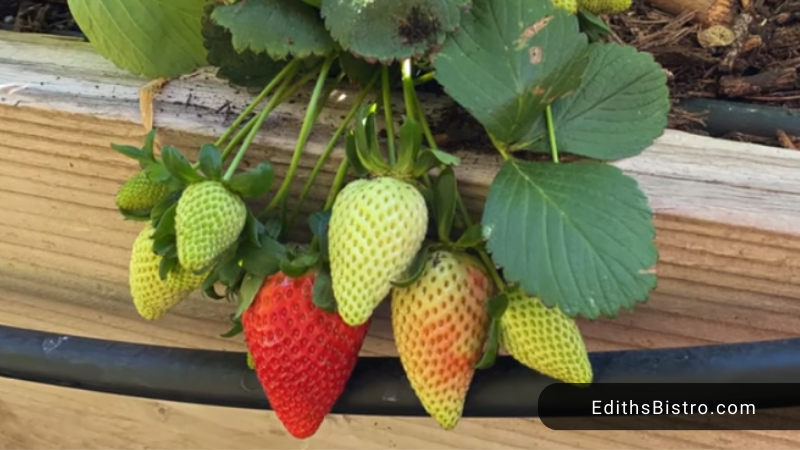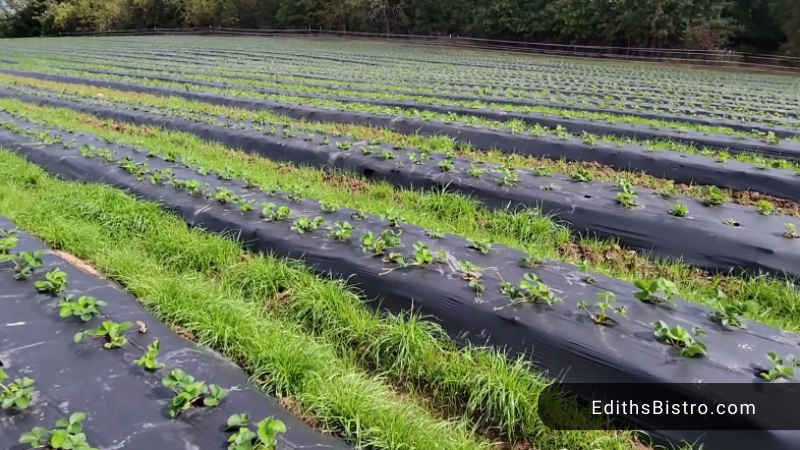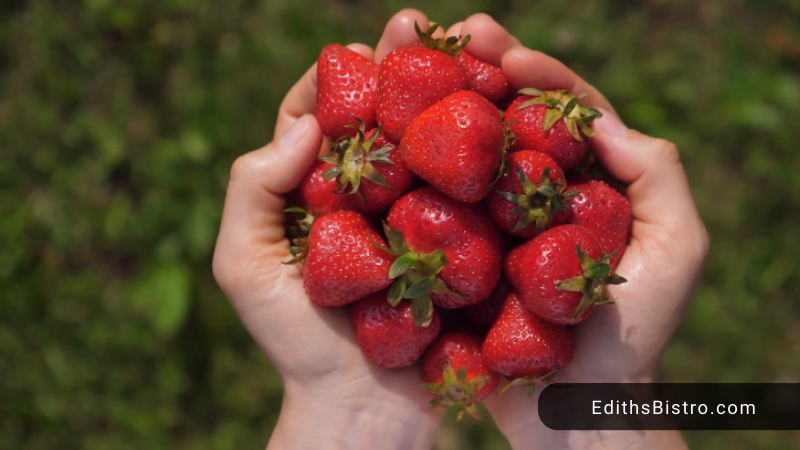Want to start your home garden with strawberries? But there’s an important initial knowledge that you must know about strawberries: are strawberries perennials? Keep reading to figure out your planting zone and tips on long-lived strawberries.
Are Strawberries Perennials?
Strawberries are perennials. That means it can live for three or more growing seasons. This can surprise you. Strawberry plants also fall asleep in winter, waiting for changing seasons ahead. Thanks to that time, they can protect their energy and prepare for a successful harvest.
Are All Strawberries Perennials?

Strawberries are divided into 03 types, and all of them are perennials. You can distinguish them based on their flowers and fruits. Here is some basic information you should read to know.
- June-bearing varieties: The June-bearing type can bring a large crop, usually in June (like the name). It can be divided into early season, mid-season, and late varieties. For example, Honeoye, Chandler, or the Jewel.
- Ever-bearing varieties: It can produce 2-3 separate yields of strawberries: early summer, midsummer, and late summer (near to early fall). For example, Ozark Beauty, Eversweet, and Quinault.
- Day-neutral varieties: They will produce fruit during the entire season. Up until the first frost, they will still yield fruit. For instance, Seascape or San Andreas.
Are Strawberries Perennials In Your Zone/City?
For those who don’t know, the planting zones show the best suitable plants for your area or zone. You also should know that the hardiness zones help you choose the plants that can live in winter in your area.
Visit some websites that show the USDA zones and give them your code. Click here.

Are strawberries perennials in zone 3, 4, 5, 6, 7, and 8?
Strawberries are perennials in USDA zones 3 through 8. That means they can survive winters with temperatures as low as 10 to 20°F. In these regions, once-planted bare-root strawberry crowns can be gathered all summer, and their green leaves die back throughout the winter.
Are strawberries perennials in zone 9 and 10?
Strawberries are likely annuals in zone 9 and 10. These zones have hot summers, so some strawberries can’t survive. Farmers usually plant strawberries in the fall and harvest them in the next growing season to avoid the hard temperature of summer. If you live here, you should focus on spacing plants to lengthen plants lifespan.
Are strawberries perennials in Michigan?
Yes. Strawberries are perennials in Michigan. They can live in this region for 2-6 years. Michigan is zone 4, 5, and 6, where strawberries usually sleep in winter when November comes (mostly December in zone 6).
In Michigan, you should plant strawberries in spring. But if you want to plant it in the fall, that’s ok. When the temperature rises to 20 to 30°F, don’t forget to mulch the soil.
Are strawberries perennials in Illinois?
Yes. Strawberries are perennials in Illinois. As long as the planting is kept up, a strawberry patch will continue to produce for 3-4 years. Plant strawberries as soon as the ground can be handled in the spring (in March or April) to give the plants time to establish themselves before the hot weather hits.
What can we do to protect strawberries from winter?
The best time to mulch your strawberry plants is right after the plants go into hibernation. You may also use a row cover to give the strawberry mounds more heat. They might emerge in the early spring as a result.
For the active harvest season, the strawberry plants need a layer of mulch (organic, fabric, or plastic) to keep the berries in the best quality. Keep weeds under control, keep soil moisture, and ensure it is available as the plants and berries develop throughout the season.
Tips For Long-lived Strawberries
Now you know strawberries are perennial and live more than 3 growing seasons. But are there any tips to increase a plant’s life to maximize yield? This part will show you the challenges; tips for fertilizing and harvesting to protect your plants. Let’s see some common challenges first.
- Improper soil conditions: Strawberries prefer well-draining soil rich in organic matter. Too heavy soil can make the roots poor in development. Water cannot go through, also. These cause a lot of root problems.
- Insufficient sunlight. Strawberries thrive in full sun, requiring at least 6-8 hours of direct sunlight daily. Their fruit production may be limited if they don’t receive enough sunlight.
- Weed competition. If weeds and strawberry plants compete, weeds can K.O. Weeds take all nutrients, water, and space. By mulching and hand-weeding, you can protect your strawberry plants.
- Pest and plant issues. It’s very not good for strawberries because of the appearance of aphids, slugs, etc. Regularly observing the plants, giving good hygiene, and applying organic pest controls to manage these issues.
- Inadequate watering. Although water is essential, avoiding waterlogging is also essential. Over or under-watering can lead to root rot or poor fruit development. It’s important to water the plants but avoid excessive saturation.

With fertilizing work, 3-4 pounds of 10-10-10 fertilizer help to enrich the soil, ensuring a balanced nutrient too. For harvesting, there are some useful tips: picking fully red berries, picking in three days, and cutting by the stem.
FAQs
Can strawberry plants survive the winter in pots?
Yes, strawberry plants can survive winter in pots, but they require proper care and protection. Insulating the pots with mulch or wrapping them can protect the roots from freezing temperatures.
What to do with strawberry plants at the end of season?
Trim back any not-good foliage, remove weeds from the area, and add a layer of mulch around the plants to protect the roots during winter.
Do strawberry plants spread?
Yes, strawberry plants have a natural spreading habit. They produce runners, long stems that grow outward from the mother plant. These runners develop new daughter plants that can take root and create new strawberry plants, allowing the strawberry patch to expand over time.
References:
- Strawberry – https://en.wikipedia.org/wiki/Strawberry
- Plants Wiki – https://plantspedia.fandom.com/wiki/Strawberry





![What To Pair With Quiche? 25+ Best Dishes [With Pictures]](https://www.edithsbistro.com/wp-content/uploads/2024/04/what-to-pair-with-quiche-160x90.jpg)
